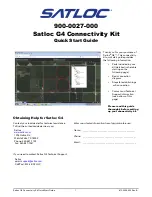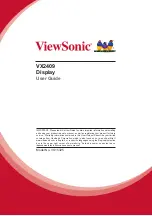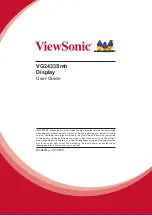
GTN 625/635/650 TSO Installation Manual
Page 1-1
190-01004-02
Rev. C
1.
GENERAL DESCRIPTION
1.1
Introduction
This manual is applicable for units with main software version 2.00 or later. This manual describes the
physical, mechanical, and electrical characteristics, as well as instructions and other conditions and
limitations for installation and approval of the GTN units. Refer to Section 2, Limitations, for additional
information and other considerations.
NOTE
Except where specifically noted, references made to GTN will equally apply to the
GTN 625, GTN 635, and GTN 650. All screen shots used in this document are current at
the time of publication. Screen shots are intended to provide visual reference only. All
information depicted in screen shots, including software file names, versions, and part
numbers, is subject to change and may not be up to date.
Table 1-1. GTN Units
Model
Part Number
Color
GTN 625
010-00811-00
BLACK
GTN 635
010-00812-00
BLACK
GTN 650
010-00813-00
BLACK
010-00889-00
GRAY
1.2
Equipment Description
The GTN 625 is a GPS/SBAS unit and may be approved for IFR en route, terminal, non-precision, and
precision approach operations. The GTN 625 meets the requirements of the TSO specified in Table 1-4.
The GTN 635 includes all of the features of the GTN 625 in addition to an airborne VHF communications
transceiver. The GTN 635 meets the requirements of the TSO specified in Table 1-4.
The GTN 650 includes all of the features of the GTN 625 in addition to an airborne VHF communications
transceiver and airborne VOR/localizer (LOC) and glideslope (G/S) receivers. The GTN 650 meets the
requirements of the TSO specified in Table 1-4.
CAUTION
The GTN has a display that is coated with a special anti-reflective coating that is very
sensitive to waxes and abrasive cleaners. CLEANERS CONTAINING AMMONIA
WILL HARM THE ANTI-REFLECTIVE COATING. It is very important to clean the
display using a clean, lint-free cloth and an eyeglass lens cleaner that is specified as safe
for anti-reflective coatings.
CAUTION
The use of ground-based cellular telephones while aircraft are airborne is prohibited by
FCC rules. Due to potential interference with onboard systems, the use of ground-based
cell phones while the aircraft is on the ground is subject to FAA regulation 14
CFR §91.21. FCC regulation 47 CFR §22.925 prohibits airborne operation of ground-
based cellular telephones installed in or carried aboard aircraft. Ground-based cellular
telephones must not be operated while aircraft are off the ground. When any aircraft
leaves the ground, all ground-based cellular telephones on board that aircraft must be
turned off. Ground-based cell phones that are on, even in a monitoring state, can disrupt
GPS/SBAS performance.














































